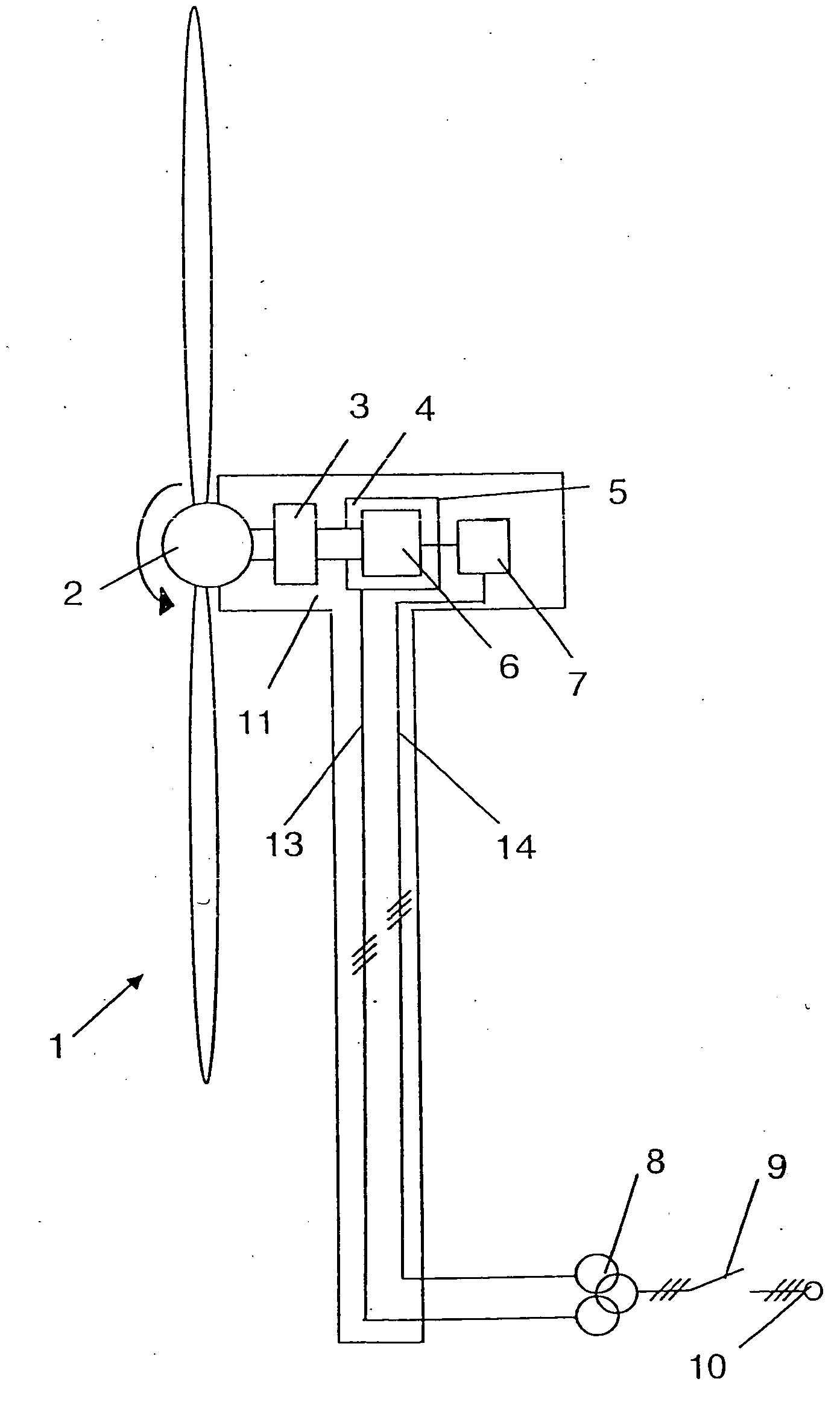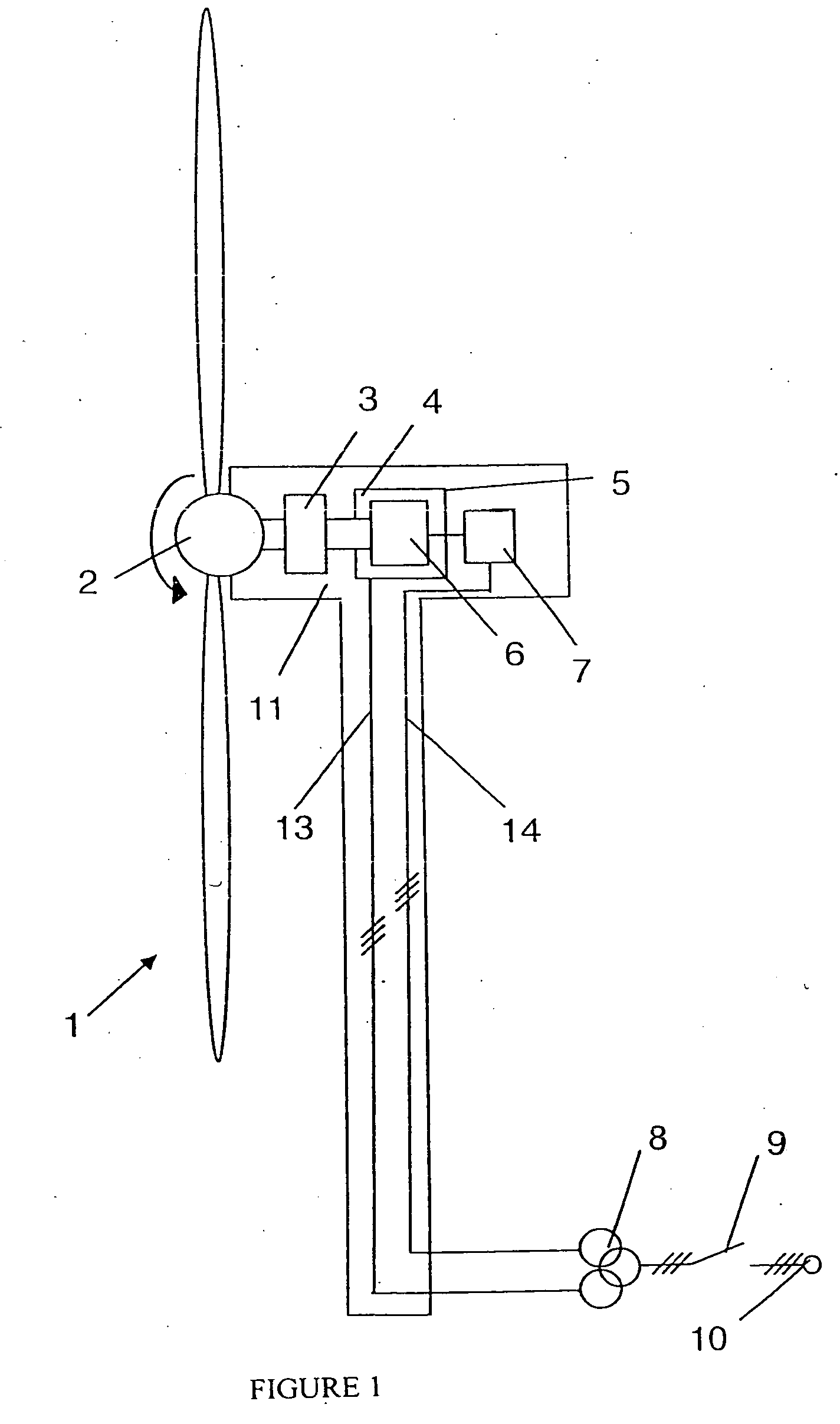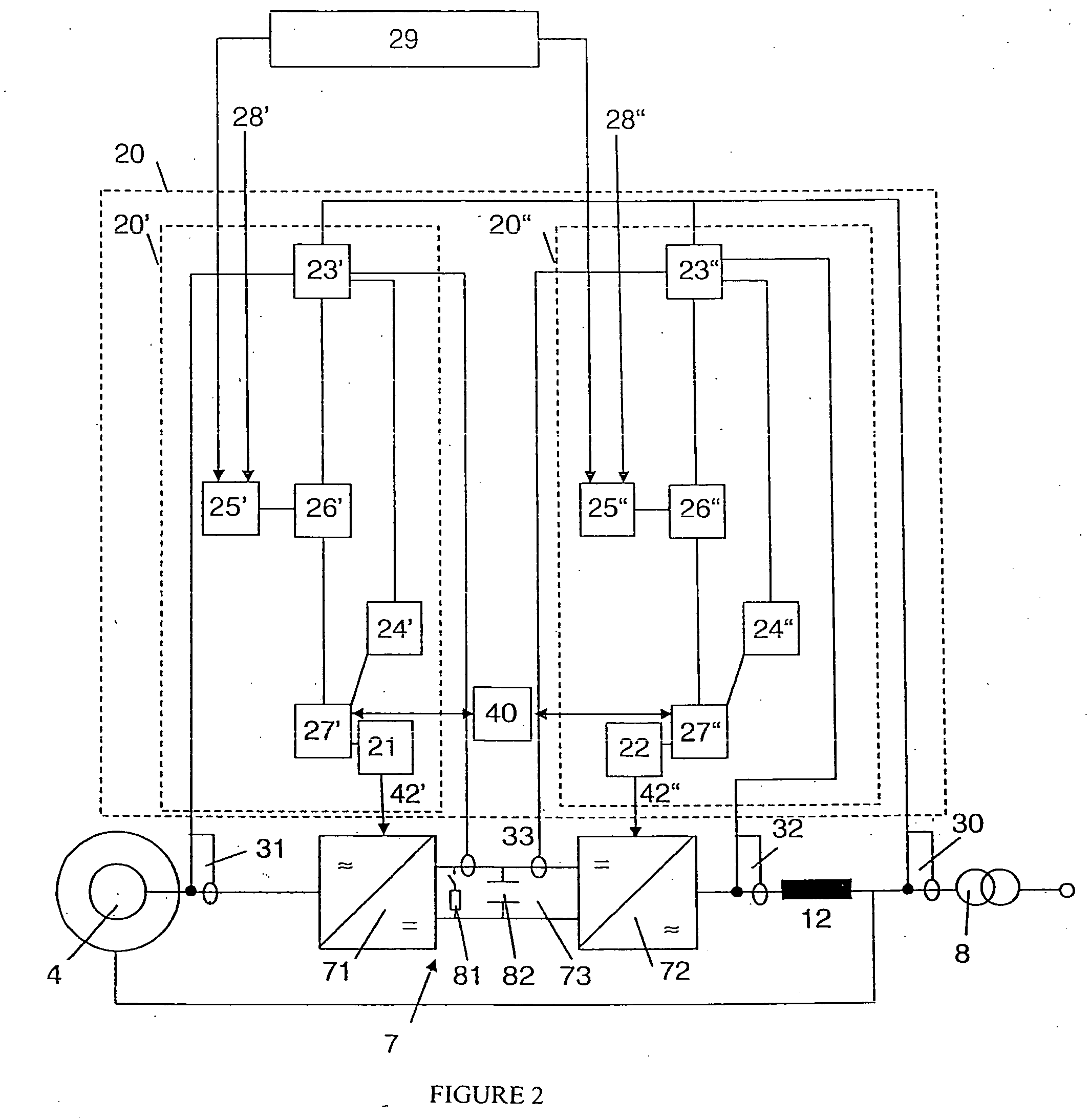Wind energy installation having converter control
a technology of wind energy installation and converter control, which is applied in the direction of dynamo-electric converter control, electric generator control, machines/engines, etc., can solve the problem of no longer being able to achieve the additionally required current, and achieve the effect of preventing excessive load on the inverter and better us
- Summary
- Abstract
- Description
- Claims
- Application Information
AI Technical Summary
Benefits of technology
Problems solved by technology
Method used
Image
Examples
Embodiment Construction
[0034]The design of the wind energy installation will be explained briefly with reference to FIG. 1. The wind rotor 2 of the wind energy installation 1 is caused to rotate by the wind. In this case, the wind rotor 2 is mechanically connected to the generator 4 via a gearbox 3, and causes the rotor 6 of the generator 4 to rotate. The stator 5 of the generator is connected to the electrical grid 10 via power cables 13 in the tower, a transformer 8 and a switch disconnector 9. The rotor 6 of the generator 4 is connected to a converter 7 which is in turn connected to the electrical grid 10, likewise via power cables 14 in the tower, a transformer 8 and a switch disconnector 9.
[0035]In this case, the transformer 8 is a transformer with three windings, that is to say in each case with separate windings for the power strand of the grid-side inverter 72 and the generator-side inverter 71. Embodiments with two or a different number of windings are likewise feasible. When the generator 4, whi...
PUM
 Login to View More
Login to View More Abstract
Description
Claims
Application Information
 Login to View More
Login to View More - R&D
- Intellectual Property
- Life Sciences
- Materials
- Tech Scout
- Unparalleled Data Quality
- Higher Quality Content
- 60% Fewer Hallucinations
Browse by: Latest US Patents, China's latest patents, Technical Efficacy Thesaurus, Application Domain, Technology Topic, Popular Technical Reports.
© 2025 PatSnap. All rights reserved.Legal|Privacy policy|Modern Slavery Act Transparency Statement|Sitemap|About US| Contact US: help@patsnap.com



